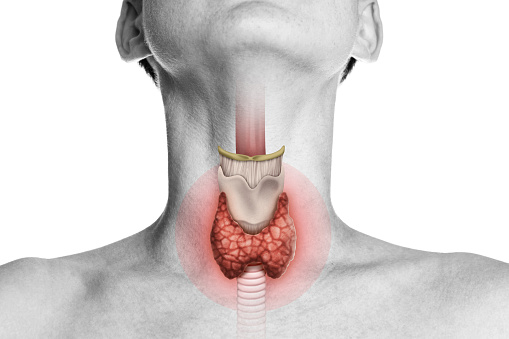One symptom, many conditions
Many health conditions often elude proper diagnosis due to their complex and overlapping symptoms, it’s not just endometriosis. But endometriosis is uniquely difficult to diagnose. Affecting millions of women worldwide, endometriosis is a chronic disorder characterized by the abnormal growth of endometrial tissue outside the uterus. Endometrial tissue can deposit pretty much anywhere, and has been as far as the brain, although it does tend to hang out in the abdomen. I start thinking endometriosis when a woman reports other people in her family who have been diagnosed with endometriosis and it’s been confirmed, if they have an endometrioma on ultrasound, if they have severe pain with their period and it was severe very early in life. And any woman with issues getting pregnant has a higher likelihood of having endometriosis than other women.
Frustratingly though, you can have a ton of endometriosis and not have any pain. Symptoms and disease severity do not correlate. So this is why if you have a family history of endometriosis or unexplained fertility issues or you yourself have fertility issues, I am going to consider this as something we need to rule out, even in absence of pain.

8 Top Conditions to Rule Out
1. Irritable Bowel Syndrome (IBS) or SIBO: Endometriosis and irritable bowel syndrome share a significant overlap in symptoms, making it challenging to differentiate between the two. Abdominal pain, bloating, constipation, and diarrhea are common features of both conditions. Consequently, misdiagnoses are not uncommon, leading to delayed treatment and prolonged suffering for the patients. Proper evaluation and collaboration between gynecologists and gastroenterologists are crucial to distinguish between endometriosis and IBS. I frequently find that GI dysfunction is a frequent occurrence with women who have endometriosis and also plays a role in the underlying causes (like inflammation). If I treat a woman with endometriosis and gut issues are present, I always address those as well because I find women just get better when the gut is addressed.
2. Pelvic Inflammatory Disease (PID): Pelvic inflammatory disease is another condition that can mimic endometriosis. PID is an infection of the female reproductive organs. Symptoms such as pelvic pain, painful intercourse, abnormal bleeding, and infertility can overlap with endometriosis. A thorough examination and appropriate laboratory tests are necessary to differentiate between the two conditions. PID is serious business, and any new acute symptoms like sudden pain, vaginal discharge changes, or fever need to be checked out by a medical doctor ASAP.
3. Ovarian Cysts: The presence of ovarian cysts can complicate the diagnosis of endometriosis, as both conditions can cause pelvic pain and discomfort. Ovarian cysts are fluid-filled sacs that form within or on the surface of the ovaries. The pain associated with cysts can be similar to that experienced by individuals with endometriosis. There is also a type of cyst associated with endometriosis called an endometrioma or chocolate cyst. This will look different on an ultrasound from simple cysts. Ultrasound and other imaging techniques are essential tools to accurately identify and differentiate between ovarian cysts and endometriosis.
4. Adenomyosis: Adenomyosis is a condition in which the endometrial tissue grows into the muscular wall of the uterus. This condition often shares symptoms such as pelvic pain, heavy menstrual bleeding, and painful periods with endometriosis. However, the location of the tissue growth distinguishes adenomyosis from endometriosis. A thorough clinical evaluation, imaging studies, and sometimes, a biopsy can help confirm the diagnosis. The underlying causes are very similar though and it’s common to have both, and I would treat them very similarly.
5. Interstitial Cystitis (IC): Interstitial cystitis, also known as painful bladder syndrome, is a chronic bladder condition that can present with symptoms akin to endometriosis. It’s known in some circles as IBS of the bladder, as it’s not super well understood but can have quite severe symptoms. Frequent urination, urgency, bladder pain, and pelvic discomfort are features common to both conditions. To distinguish between IC and endometriosis, healthcare providers may conduct cystoscopy, urine tests, and pelvic exams to evaluate the source of the symptoms.
6. Hernias: This is more often that endometriosis is mimicking a hernia than the other way around but it’s important to consider that there are some hernias that can present with pain that is very similar to endometrial pain. Endometriosis can also deposit in the inguinal canal and mimic hernias. This is something that needs to be checked out with a thorough physical exam and possibly imaging.
7. Nerve Dysfunction: The pudendal nerve is a nerve in the pelvis that supplies sensation information to the brain from the pelvic area. Nerves can become dysfunctional from the spine, or entrapment from other tissue all along its path. Sometimes this can even happen from damage from abdominal surgery. Pudendal nerve neuralgia can be very similar to the pain of endometriosis. Endometriosis can also damage or entrap the pudendal nerve and cause pelvic pain that way.
8. Pelvic Floor Issues: the muscles of your pelvic floor can be weak or contracted and all of this can cause dysfunction, even pain! I highly recommend pelvic floor physio for this, and arguably all people with vaginas should be assessed by a pelvic floor physio.

Moving Forward and Getting Answers
Visceral manipulation can help assess and treat if there is pudendal nerve entrapment or dysfunction. A physical exam and imaging may not go far in diagnosing endometriosis but it does help rule out other things. Asking the right questions and looking at lab work can help determine how much the gut is involved, or inflammatory factors. This is why I love naturopathy, we have the time and the knowledge to go through all these things and make a list of what is important to consider and then start to experiment!
Endometriosis is a complex condition that presents a diagnostic challenge due to its resemblance to various other health conditions. It’s also not an easy condition to confirm for sure. It is super important for both patients and healthcare providers to be aware of the diverse range of conditions that can mimic endometriosis. Collaboration between specialists from multiple disciplines, such as gynecologists, gastroenterologists, pelvic floor physios, urologists and of course naturopaths, is crucial to ensuring accurate diagnosis and appropriate treatment. By promoting awareness, advancing medical research, and improving diagnostic techniques, we can pave the way for early intervention and enhanced quality of life for people affected by endometriosis and its look-alike health conditions. And while many of these diagnostic procedures are not easy to get in Canada there are things that we can do to start getting to the bottom of things and narrowing down the cause of pain.
Bulletti C, Coccia ME, Battistoni S, Borini A. Endometriosis and infertility. Journal of assisted reproduction and genetics. 2010 Aug;27:441-7.
Chiaffarino F, Cipriani S, Ricci E, Mauri PA, Esposito G, Barretta M, Vercellini P, Parazzini F. Endometriosis and irritable bowel syndrome: a systematic review and meta-analysis. Archives of gynecology and obstetrics. 2021 Jan;303:17-25.
Sataloff DM, LaVorgna KA, McFarland MM. Extrapelvic endometriosis presenting as a hernia: clinical reports and review of the literature. Surgery. 1989 Jan 1;105(1):109-12.
Scioscia M, Virgilio BA, Laganà AS, Bernardini T, Fattizzi N, Neri M, Guerriero S. Differential diagnosis of endometriosis by ultrasound: a rising challenge. Diagnostics. 2020 Oct 20;10(10):848.
Vilasagar S, Bougie O, Singh SS. A practical guide to the clinical evaluation of endometriosis-associated pelvic pain. Journal of Minimally Invasive Gynecology. 2020 Feb 1;27(2):270-9.




